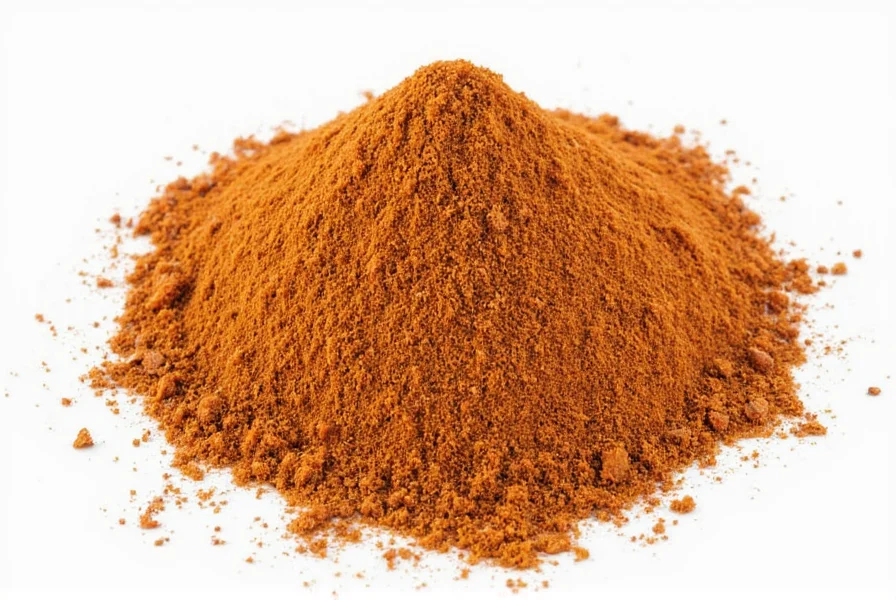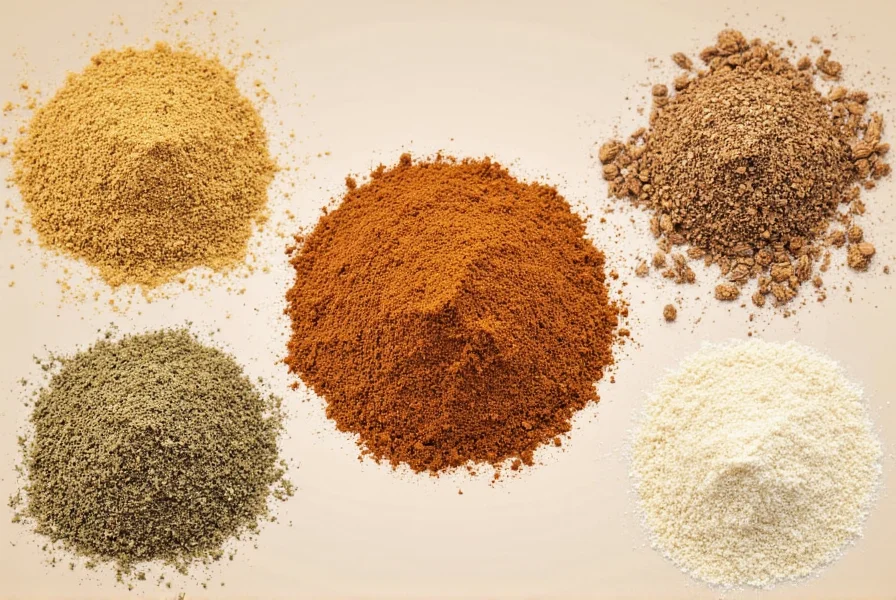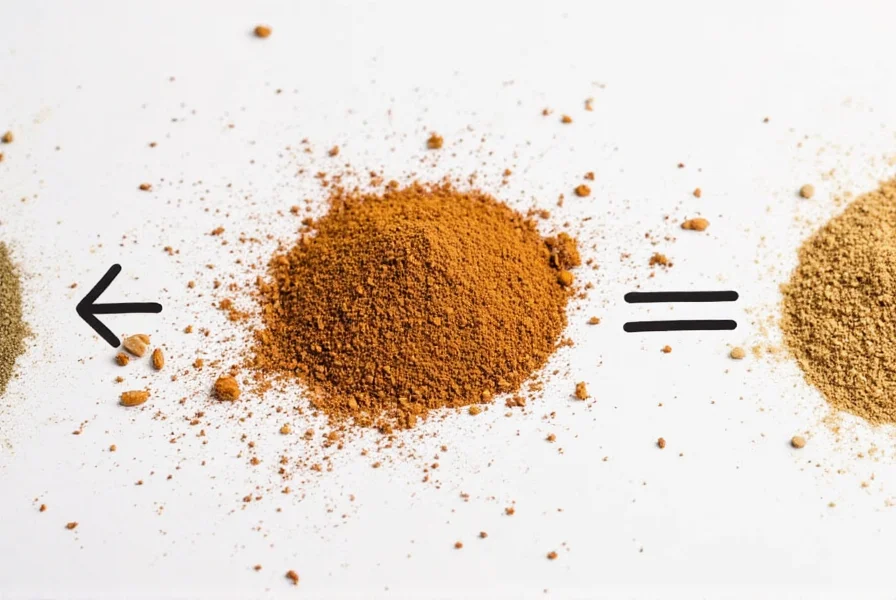The best spice alternatives to cumin are coriander (for mild earthiness), chili powder (for Mexican dishes), garam masala (for Indian recipes), and caraway seeds (for similar earthy notes). Each substitute works best in specific cuisines and recipes, with coriander being the closest flavor match at a 1:1.5 ratio (use 1.5 tsp coriander for every 1 tsp cumin).
Running out of cumin mid-recipe can derail your cooking plans, but several common pantry spices can effectively fill in. Whether you're adapting to dietary needs, exploring new flavor profiles, or simply lacking this essential spice, understanding proper cumin alternatives ensures your dishes maintain their intended character. This guide details the most effective substitutes based on flavor chemistry and culinary application, not just superficial similarities.
Understanding Cumin's Unique Flavor Profile
Cumin delivers a distinctive earthy, warm, slightly citrusy flavor with subtle bitterness that's fundamental in many global cuisines. Its complex profile contains notes of:
- Earthy, nutty base notes
- Subtle citrus undertones
- Mild peppery warmth
- Hint of smokiness (especially in toasted form)
These characteristics make cumin irreplaceable in certain dishes, but understanding which elements matter most for your specific recipe determines the best spice alternative to cumin.
Top 7 Cumin Substitutes Ranked by Effectiveness
| Substitute | Best For | Substitution Ratio | Flavor Difference |
|---|---|---|---|
| Coriander | General purpose, Middle Eastern dishes | 1.5:1 (more coriander) | Milder, citrus-forward, less earthy |
| Chili Powder | Mexican recipes, chili, tacos | 1:1 | More heat, tomato notes, less earthiness |
| Garam Masala | Indian curries, stews | 0.75:1 (less masala) | Sweeter, more complex spice blend |
| Caraway Seeds | Mediterranean, German dishes | 1:1 | Sharper anise notes, similar earthiness |
| Paprika | Spanish, Hungarian dishes | 1.25:1 (more paprika) | Sweeter, less complex, no citrus notes |
| Taco Seasoning | Tacos, fajitas, Tex-Mex | 1.5:1 | More garlic/onion, saltier, less earthy |
| Curry Powder | Asian-inspired dishes | 0.75:1 | Sweeter, more turmeric-forward |
Detailed Analysis of Each Cumin Alternative
Coriander: The Closest Flavor Match
Coriander provides the most similar flavor profile to cumin with its earthy base and citrus notes, though it's milder and less intense. When seeking a cumin replacement for Indian cooking, coriander works particularly well as both spices originate from the same plant family. For best results, toast whole coriander seeds before grinding to enhance their earthy notes. Use 1.5 teaspoons of coriander for every teaspoon of cumin required in your recipe.

Chili Powder: Best for Mexican Recipes
While not a single spice but a blend, chili powder makes an excellent cumin alternative for Mexican recipes since it typically contains cumin along with other complementary spices. Standard chili powder usually includes cumin, garlic powder, oregano, and paprika. Use equal amounts as a direct substitute in chili, tacos, and enchiladas. For authentic flavor, choose ancho chili powder for its deeper, fruitier notes that better mimic cumin's complexity.
Garam Masala: Ideal for Indian Dishes
When cooking Indian cuisine without cumin, garam masala provides the closest approximation of the complex spice profile. This blend typically contains cumin along with coriander, cardamom, and cloves. Use ¾ teaspoon of garam masala for every teaspoon of cumin called for, as the additional spices create a more complex flavor. This works particularly well in substitute for cumin in curry applications where the full spice profile matters more than cumin's specific notes.
Specialized Substitution Guidelines
Not all cumin substitutes work equally well across different dishes. Consider these recipe-specific recommendations when choosing your spice alternative to cumin:
- For chili recipes: Use chili powder at 1:1 ratio or create a blend of ½ tsp paprika + ¼ tsp coriander + ¼ tsp oregano per tsp of cumin
- For Indian curries: Garam masala at ¾:1 ratio or equal parts coriander and turmeric
- For Middle Eastern dishes: Equal parts coriander and sumac for the citrus note
- For taco seasoning: Use pre-made taco seasoning at 1.5:1 ratio or make your own blend with paprika, garlic powder, and onion powder
Creating Your Own Custom Cumin Substitute Blend
For the most versatile cumin replacement for multiple cuisines, create this pantry-friendly blend:
- 2 parts coriander
- 1 part paprika
- ½ part cumin seed (if available, otherwise omit)
- ¼ part ground cinnamon
- Pinch of cayenne (optional for heat)
Toast whole spices before grinding for maximum flavor. This blend works particularly well as a substitute for cumin in recipes requiring deep earthiness with subtle warmth. Store in an airtight container for up to 3 months.

When Substitutes Won't Work: Dishes That Require Real Cumin
Some dishes rely so heavily on cumin's unique flavor that substitutes significantly alter the character. These include:
- Authentic Yemeni hawaij spice blend
- Moroccan ras el hanout (where cumin is a dominant note)
- Traditional Indian dhana jeera (coriander-cumin blend)
- Mexican adobo sauce
In these cases, consider making a special trip for cumin or adjusting your recipe plan rather than using a substitute that will fundamentally change the dish's character.
Expert Tips for Successful Substitution
Professional chefs recommend these techniques when using a spice alternative to cumin:
- Toast whole spices before grinding to enhance earthy notes that mimic cumin's depth
- Add substitutes later in cooking than you would cumin, as many alternatives lose flavor faster
- Balance with acid - a splash of lemon juice can help mimic cumin's citrus notes
- Adjust salt levels when using pre-mixed blends like taco seasoning that contain added salt
- Start with less and taste frequently - you can always add more but can't remove excess spice
Frequently Asked Questions
What is the closest spice to cumin in flavor?
Coriander is the closest single spice to cumin in flavor profile, offering similar earthy notes with citrus undertones, though it's milder. For best results, use 1.5 teaspoons of coriander for every teaspoon of cumin required in your recipe.
Can I use chili powder instead of cumin in chili recipe?
Yes, chili powder makes an excellent substitute for cumin in chili recipes at a 1:1 ratio since most chili powders already contain cumin along with complementary spices like paprika and garlic. For deeper flavor, choose ancho chili powder which has fruitier notes that better mimic cumin's complexity.
Is cumin the same as caraway seeds?
No, cumin and caraway seeds are different spices though they share some visual similarities and earthy flavor notes. Caraway has more pronounced anise notes while cumin has citrus undertones. They can substitute for each other at a 1:1 ratio in many recipes, particularly in Mediterranean and German dishes where both are commonly used.
What can I use if I don't have cumin for tacos?
For tacos, the best cumin substitute is either chili powder at a 1:1 ratio or taco seasoning at a 1.5:1 ratio. Alternatively, create a blend of 1 tsp paprika, ½ tsp coriander, ¼ tsp garlic powder, and ¼ tsp onion powder to replace 1 tsp of cumin, which provides the earthiness without overwhelming the other flavors.
Does garam masala contain cumin?
Most traditional garam masala blends do contain cumin, typically comprising about 20-25% of the blend along with coriander, cardamom, cloves, and cinnamon. This makes garam masala an excellent cumin substitute for Indian dishes at a 0.75:1 ratio (use ¾ tsp garam masala for every tsp of cumin), as it provides similar earthiness with additional complementary spices.











 浙公网安备
33010002000092号
浙公网安备
33010002000092号 浙B2-20120091-4
浙B2-20120091-4